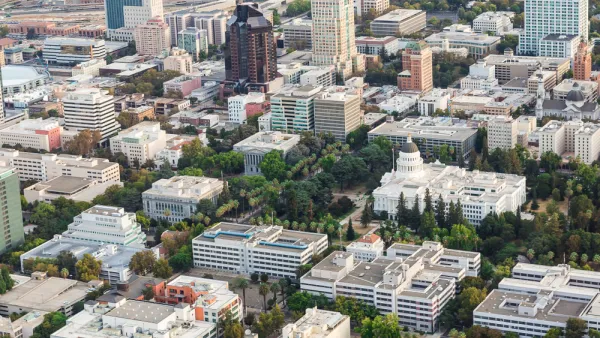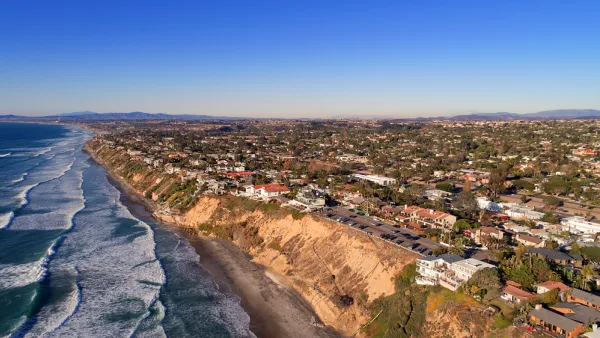Heretofore, the question was never if, but when, the nation's most populous state would reach 40 million.

The Golden State grew by 87,494 residents last year, an increase of 0.2 percent from 2018, bringing the total estimated population to 39,782,870 as of January 1st, 2020, according to demographic data released by the Demographic Research Unit of the California Department of Finance. It did not escape the attention of veteran California journalist, Dan Walters, who writes commentaries for CalMatters, a nonpartisan, nonprofit journalism venture for the Golden State.
With the COVID-19 pandemic raging, a new state population report issued on May 1 didn’t get much media attention. But it underscored an important trend: California may be hitting its population peak and could start seeing a decline in the not-too-distant future.
Walters indicates two reasons for the possible peaking of population growth:
- "The first is that California’s production of babies has been declining while the number of people dying has been increasing. [Natural population growth]
- "The second is that the number of people leaving California for other states has been far higher than those who move here, while foreign immigration also has been waning." [Net migration]
COVID-19
Walters adds that "the pandemic and the very sharp economic downturn it spawned will accelerate the trends, most likely retarding population growth even more."
As of May 24, California has lost 3,774 lives to COVID-19 since the first recorded death in the U.S. due to the disease occurred in Santa Clara County on Feb. 6. While it's the seventh-highest after New York, New Jersey, Massachusetts, Michigan, Pennsylvania, and Illinois, it's the 29th highest when based on the per capita death rate, in large part due to Gov. Gavin Newsom's first-in-the-nation stay-at-home order issued on March 19.
Housing production
The demographic report also includes important housing production data.
"California's statewide housing growth, as measured by net unit growth in completed housing units for 2019, was 94,662 units making 2019 the first time the state has added more housing units than people," states the bottom of page 1 of the 13-page report [pdf]. "Total housing in California reached 14,329,863 units, a 0.7 -percent increase."
Ranked by net housing gains, Los Angeles (17,533), San Francisco (4,792), San Diego (3,425), Irvine (2,964) and Oakland (2,717) added the most housing units in 2019.
However, the housing gains, entirely multi-family in Los Angeles, the nation's second-largest city (after New York) with 4,010,684 people on Jan. 1, did not prevent it from losing 0.06 percent of its population last year. The county also saw a population decrease of 0.1 percent, though that was an improvement over 2018 when it lost 0.3 percent population.
Related in Planetizen:
-
California Has Been Shedding Residents—For Decades, March 3, 2018
-
California Grows by 301,000 to 39.5 Million, December 26, 2017 [+0.77%]
-
California's Birth Rate Drops to Lowest in Recorded History, December 21, 2016 [+0.75%]
FULL STORY: California population may be peaking

Analysis: Cybertruck Fatality Rate Far Exceeds That of Ford Pinto
The Tesla Cybertruck was recalled seven times last year.

National Parks Layoffs Will Cause Communities to Lose Billions
Thousands of essential park workers were laid off this week, just before the busy spring break season.

Retro-silient?: America’s First “Eco-burb,” The Woodlands Turns 50
A master-planned community north of Houston offers lessons on green infrastructure and resilient design, but falls short of its founder’s lofty affordability and walkability goals.

Test News Post 1
This is a summary

Analysis: Cybertruck Fatality Rate Far Exceeds That of Ford Pinto
The Tesla Cybertruck was recalled seven times last year.

Test News Headline 46
Test for the image on the front page.
Urban Design for Planners 1: Software Tools
This six-course series explores essential urban design concepts using open source software and equips planners with the tools they need to participate fully in the urban design process.
Planning for Universal Design
Learn the tools for implementing Universal Design in planning regulations.
EMC Planning Group, Inc.
Planetizen
Planetizen
Mpact (formerly Rail~Volution)
Great Falls Development Authority, Inc.
HUDs Office of Policy Development and Research
NYU Wagner Graduate School of Public Service




























